Explore Tuscany
Plan your trip to tuscany: best of tuscany tourism.


Essential Tuscany
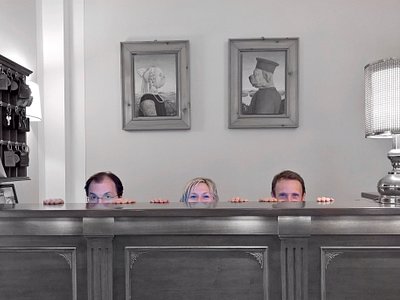
Trending in the forums
Tuscany Is Great For
Wine tastings.

Historical Tours

- Il Podere di Toscana
- Villa Cenami
- Fattoria Le Corti
- Hotel Torricelle Zucchi
- Podere Pagliaore
- Val d'Orcia
- Chianti Road
- Isola di Pianosa
- Monte Amiata
- Private Tuscany Wine Tour Experience from Florence
- Truffle hunting in Montalcino
- Tuscany Wine Tasting with Appetizer on Hillside Vineyards
- Montalcino truffle hunting
- Opera and Wine Entry Tickets Val d'Orcia in Tuscany
Experience the best of Tuscany with this regional guide

Apr 7, 2024 • 11 min read
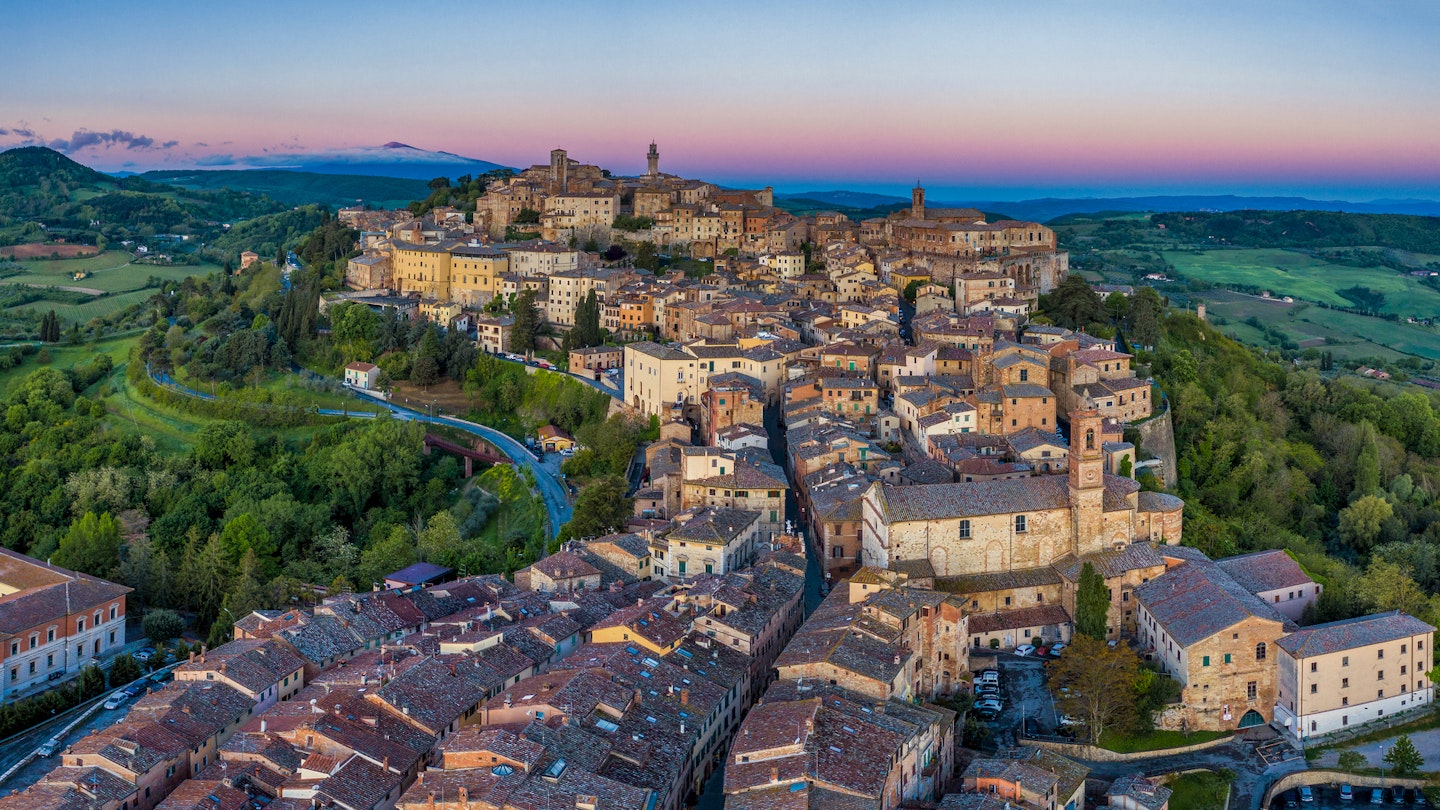
Have the most memorable trip to Tuscany with this comprehensive guide to the best of the region © Gavin Hellier / Stocksy United
Tuscany escapes easy definition. The Apennines – Italy’s mountainous spine – slope into vineyard-covered rolling hills, which in turn fade into the Mediterranean coast. This blend of diverse landscapes is home to the remains of millennia-old Etruscan settlements, isolated hamlets whose stone-built bell towers date back to the Middle Ages, and grand art cities whose heritage is invaluable.
With sarcasm being the local language, Tuscans may not seem to take such wealth too seriously. Understanding the many different facets of this rich Central Italian region can feel overwhelming. Florence tends to grab most of the attention, but it's worth exploring beyond the Renaissance city to discover more unexpected treasures.
Whether you are planning an art-filled tour of medieval cities, a road trip through the twisting countryside roads of Val d’Orcia, or a multi-day hike along the Via Francigena pilgrim route, here is how to figure it all out.
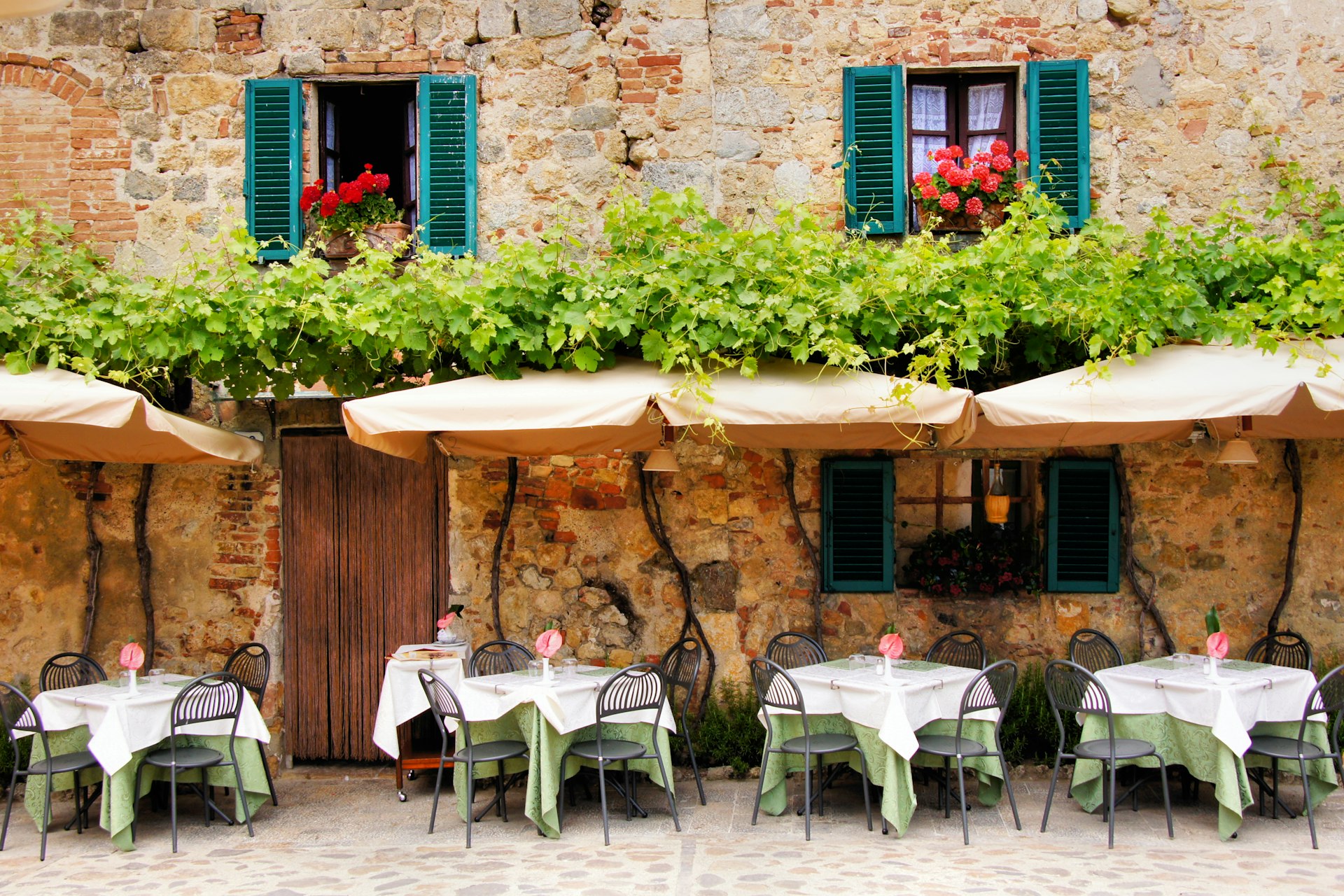
When should I go to Tuscany?
Late spring to early autumn is when most people visit Tuscany. It’s easy to understand why – days get longer and warmer, the countryside comes to life, outdoor dining opportunities abound, and festivals happen all around. Florence runs its Calcio Storico tournament and the region’s largest music festival, Firenze Rocks ; Siena has its traditional Palio horse race; Pistoia hosts its Blues Festival ; and Cortona its International Photography Festival (and there’s more).
July and August are peak holiday season. It’s when most Italians go on holiday and temperatures get scorching – days surpassing 35ºC (95ºF) have become the norm at this time of the year. Visiting in the middle of summer (especially in August) means finding beaches clogged and cities empty. Prices are significantly higher in popular destinations and booking accommodation in advance is well advised.
The two shoulder seasons – either between late April and June, or in September and October – typically offer the best compromise between good weather, flows of people, and prices.
Come in spring and you’ll see the countryside in full bloom; visit in autumn to catch the wine harvest – and related events like the Expo del Chianti Classico in September – and truffle fairs such as San Miniato’s White Truffle Exhibition in November.
Tourism slows down during winter, especially after the Christmas holidays. The coast goes into hibernation, and many countryside hotels shut down until spring. Cities offer the chance to visit famous museums without crowds – often at reduced prices, as is the case for the Uffizi in Florence – and deals on accommodation are more easily found.
How much time do I need to visit Tuscany?
With so much to see and do, it’s easy to feel overwhelmed in Tuscany. There is no perfect length of stay when it comes to exploring the region – whether you feel drawn to art, food, or the outdoors, you’ll likely leave looking forward to a second trip.
With walkable cities well-connected by public transport, five days will allow you time to tour Florence’s main sights and then jump on the train for a day trip in Siena , Lucca , or Arezzo . If you’d rather drive yourself, you can explore Val d’Orcia in about three days or plan a week-long road trip starting from Pisa which will take you through the rural towns that dot the hilly interior.
Slow travelers can also walk the path of the Tuscan section of the ancient Via Francigena – the pilgrim route that connected the Canterbury with Rome during the Middle Ages – crossing 38 municipalities over the course of 16 (or more) days.
Basing yourself in Rome? Here's how to plan a day trip to Tuscany
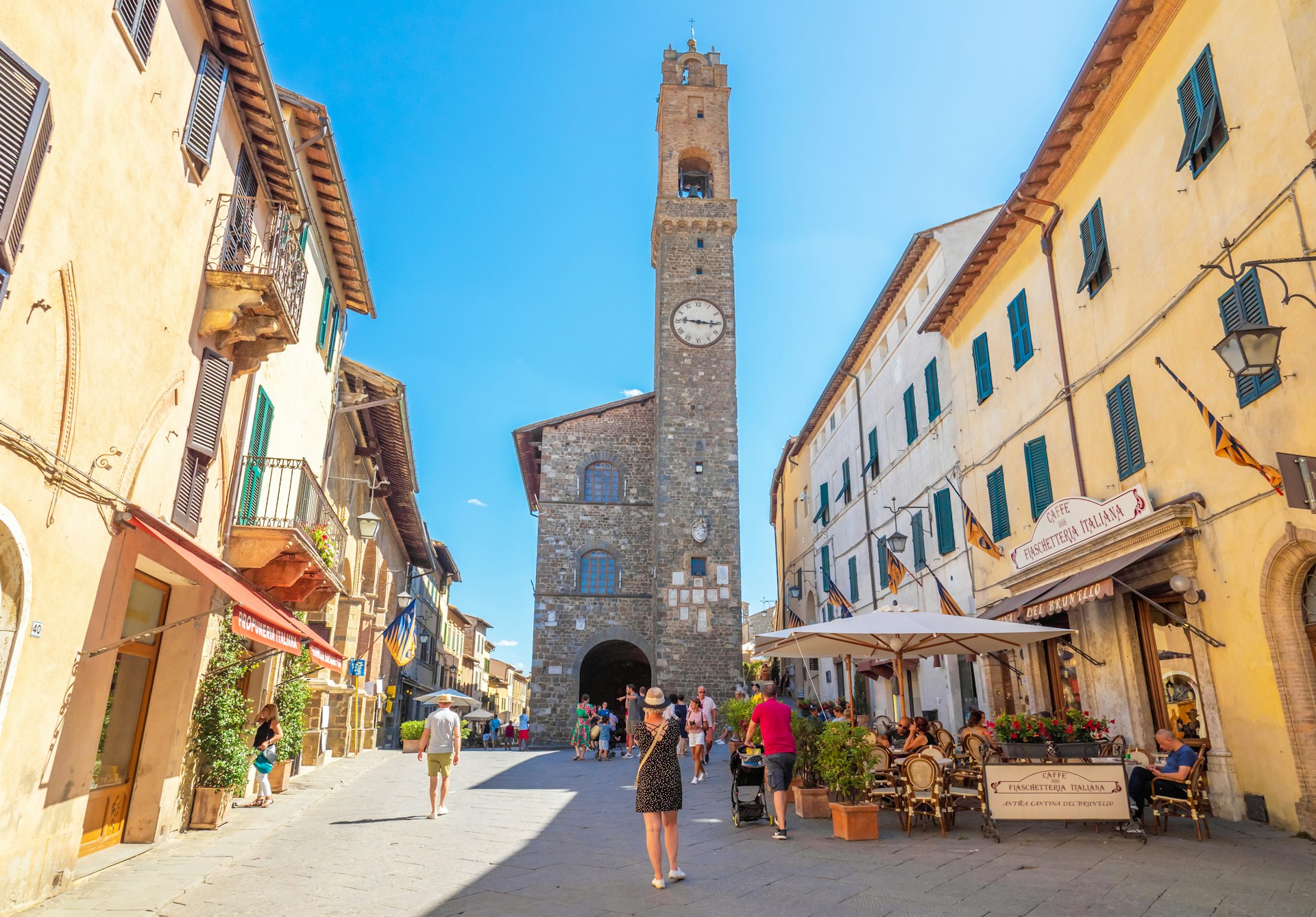
Is it easy to get in and around Tuscany?
Tuscany has two international airports, Florence and Pisa. Pisa's Galileo Galilei (PSA) airport is serviced by many low-cost airlines and has twice the passenger traffic of Firenze's Amerigo Vespucci (FLR) airport. The two cities are connected with a direct railway, which takes just over an hour to travel.
If you're not flying in from abroad, it is possible to reach Florence with high-speed trains departing from many major Italian cities, including Rome , Naples , Milan , Bologna and Venice .
Tuscany's rail network spans across 181 stations, providing an affordable means of exploring the region. You can buy regional train tickets conveniently through trenitalia.com, or at any station. Remember to validate paper tickets purchased at the station before boarding the train.
Trains do not run to many of the smaller towns and while buses are available, the best way of moving around rural areas is by car. Major rental companies, such as Budget, Sixt, Hertz, operate around Tuscany, with the largest offer available in Florence and Pisa.
Link your trip with these other great destinations in Italy
Where are the best places to go in Tuscany?
Tuscany is divided into ten provinces and people are famously proud of the defining characteristics of each. The days of warring city states are long gone, but by speaking to locals you will learn that food, dialects, and traditions can still differ widely from city to city – here is what to expect.
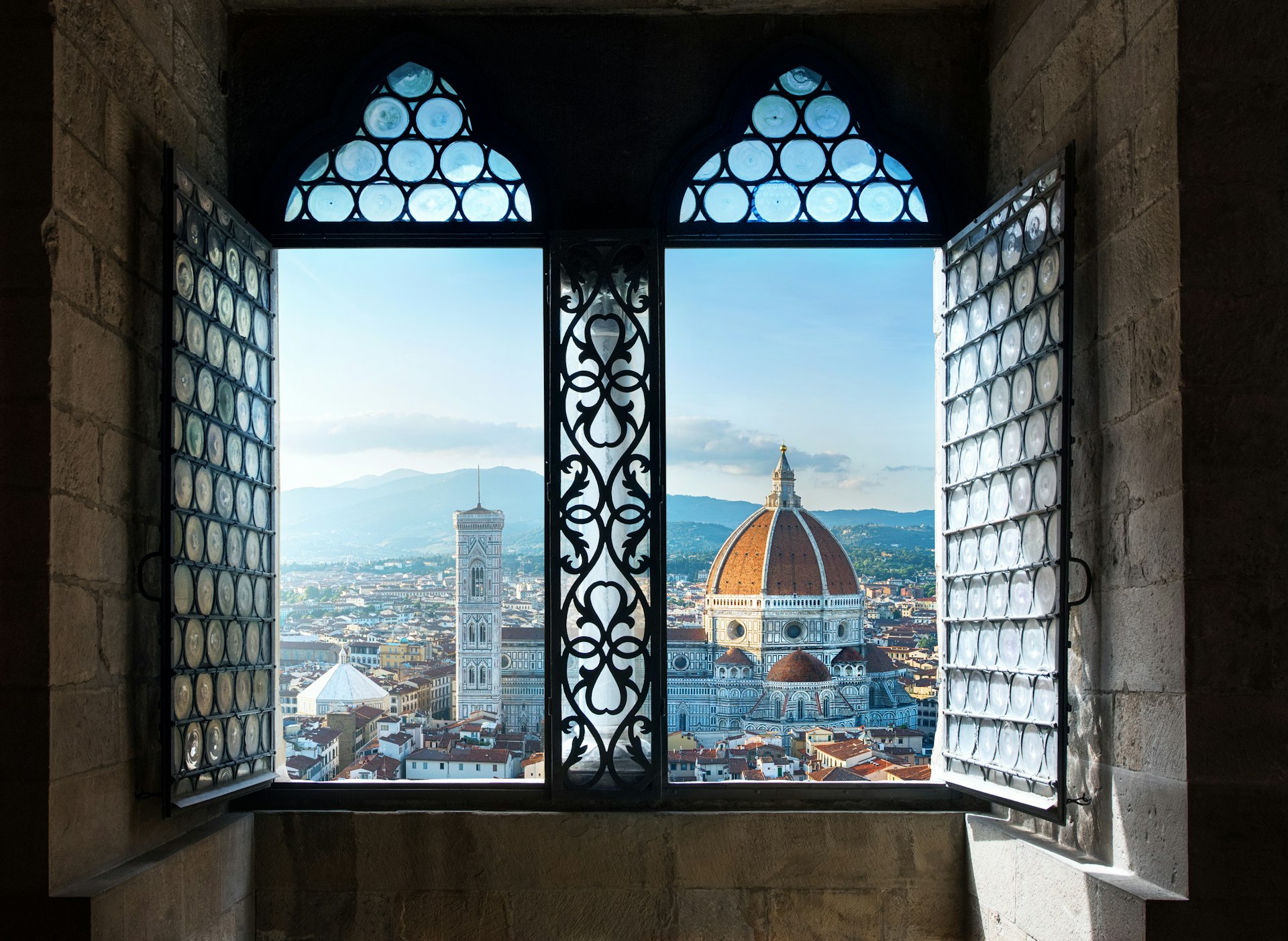
Renowned for its incomparable Renaissance heritage, Florence often feels like an open-air museum. The Tuscan capital is far from large, but its compact historic core packs grandiose cathedrals – such as Santa Maria del Fiore topped by Brunelleschi’s cupola, Santa Croce and Santa Maria Novella – opulent palaces, and some of the region’s best art museums.
The Galleria degli Uffizi , one of Italy’s most visited museums, tends to be high on everyone’s list, but there are plenty more options for art lovers including Michelangelo’s masterpieces in the Cappelle Medicee and the Galleria dell’Accademia , and the Medici’s heritage at Palazzo Pitti and Palazzo Vecchio .
Outside the thick stone walls of its captivating galleries, Florence boasts a cosmopolitan character and a vibrant culinary scene. Roam its markets in San Lorenzo or Santo Spirito , explore crafts and design workshops in the Oltrarno, and then fuel up with a stuffed schiacciata (Tuscan flatbread) at Forno Becagli or Sapori Toscani. Before dinner, get a negroni then hit one of the city’s many trattorias .
Traveling on a budget? Here are our tips for saving your euros in Florence
The Chianti region
The core of Tuscany’s most famous wine region stretches between Florence and Siena, offering as many tasting opportunities as you can imagine. The Strada Statale 222, better known as Via Chiantigiana, runs through the whole of the Chianti region north to south, twisting among vineyard-covered hills and medieval castles, making for an ideal road trip.
Antinori nel Chianti Classico , on the outskirts of Florence, is perhaps the region’s best-known winery – its futuristic headquarters in were completed in 2012, but the Antinori family has been in the wine business for over six hundred years, since Giovanni di Piero Antinori joined the Arte Fiorentina dei Vinattieri (Florentine Winemakers' Guild) in 1385. Many other wineries are found along the way, including the excellent boutique winery Capanelle and the imposing Castello di Brolio of the Ricasoli winery.
One of Tuscany’s most beautiful squares – Piazza del Campo – marks the center of Siena, Florence’s eternal rival that emerged during the Middle Ages as a progressive city-state where art and architecture flourished. Each year, the semi-circular piazza commonly known as “Il Campo” hosts the Palio, one of the most heartfelt events of the year in which Siena’s neighborhoods compete in a horse race with thousands of people watching.
Siena is worth spending a few days in, but if you are short on time make sure to enter its Duomo – Giovanni and Nicola Pisano, Pinturicchio, Michelangelo, Donatello and Gian Lorenzo Bernini all contributed to making the cathedral an unchallenged masterpiece. Don’t miss the floor, a composition of 56 marble panels forming a mosaic with scenes from the Old Testament, created by various artists between the 14th and the 19th centuries.
Val d’Orcia
The postcard image of Tuscany you have in mind likely comes from Val d’Orcia, the UNESCO-inscribed region where cypress-lined roads lead to dreamy farmhouses surrounded by hay bales that look like they are just about to roll down the hills. Films such as Anthony Minghella’s The English Patient and Ridley Scott’s The Gladiator have used Val d’Orcia as their backdrop and road tripping this region guarantees exceptional views all around.
Many charming towns dot this rural area. The construction of Pienza was commissioned to architect Bernardo Rossellino, a student of Leon Battista Alberti, by Enea Silvio Piccolomini, a humanist born who would become Pope Pius II in 1458, as the “ideal Renaissance city” and still stands as one of the main settlements in the Val d’Orcia. Nearby you can find the thermal waters of Bagno Vignoni and the fortress of Montalcino , globally revered for its prized Brunello wine.
The 12m tall walls surrounding Lucca’s historic center, built between 1513 and 1650 and stretching for four kilometers across eleven bastions, are among Europe’s best preserved fortifications and function as the city’s green lung with large parks and tree-lined paths offering great views over Lucca’s heart.
This charming city makes for an ideal day trip from Florence – inside the fortress walls, you’ll find Lucca’s Cattedrale di San Martino , where Gothic and Romanesque elements blend to form the structure housing one of Tuscany’s most precious artifacts, the celebrated Volto Santo (holy face) crucifix, believed to be one of the oldest wooden sculptures in Europe.
In summer the city hosts its Lucca Summer Festival , held in Piazza Napoleone. Over the years, artists such as Elton John, The Scorpions, Green Day, and Sting have played in the city. Another important event is the Lucca Comics & Games , one of Europe’s largest comics festivals held each year in autumn.
Pisa is often reduced to its leaning tower but there is much more to see, both inside and outside the UNESCO-listed Piazza dei Miracoli. In the Middle Ages Pisa was one of Italy’s most powerful maritime republics, and signs of its wealth are still part of this city which is now home of one of Tuscany's most important universities.
The monumental cemetery of Piazza dei Miracoli, established in 1277 to house the remains of the city’s elite, houses one of the city’s most important frescoes, the recently restored Il Trionfo della Morte (The Triumph of Death) by Buonamico Buffalmacco. Beyond Piazza dei Miracoli you find the new Navi di Pisa Museum which traces the history of the city’s relationship with the sea and features parts of over 800 ships excavated in Pisa’s surroundings.
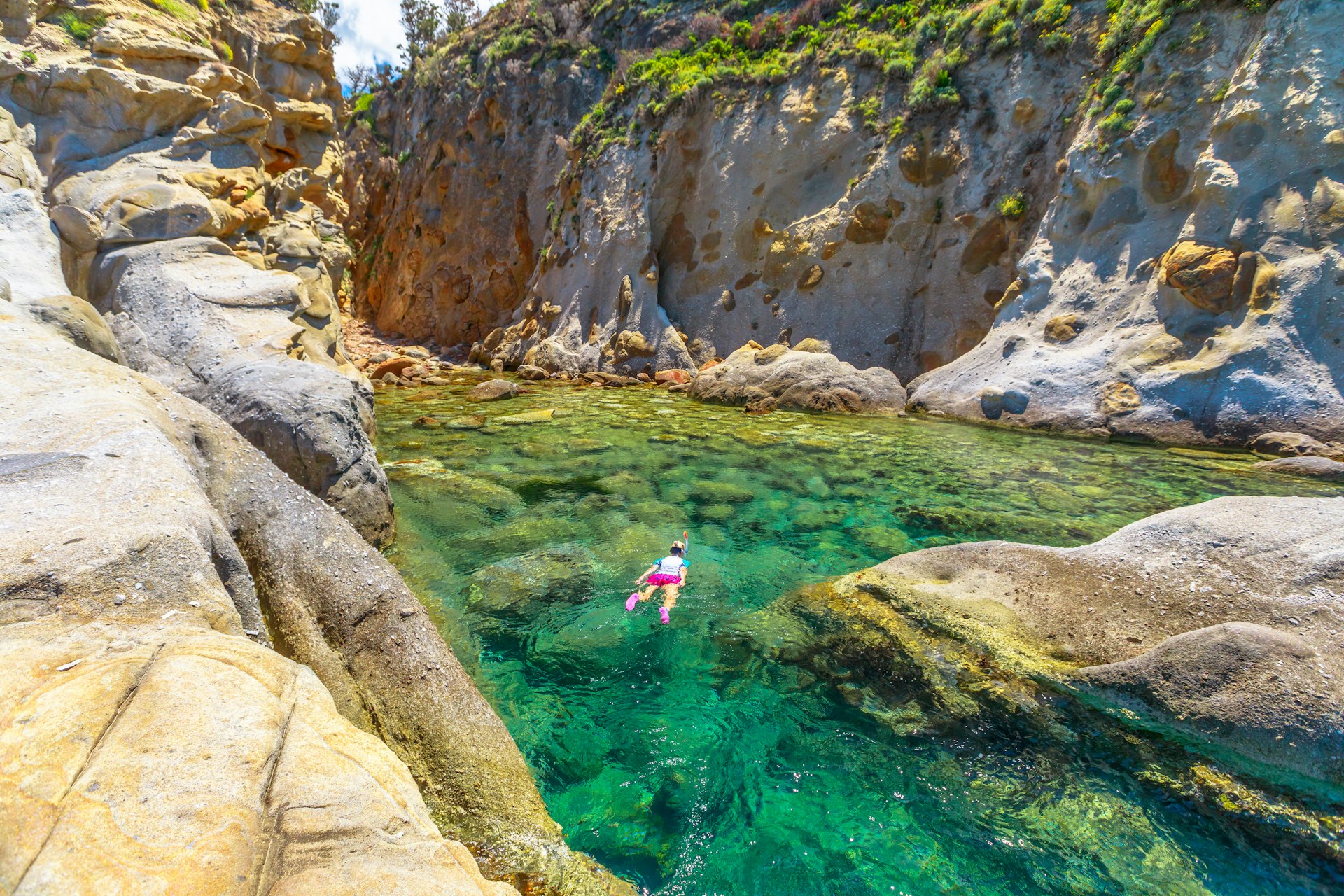
The islands
Distant from the museums and the cathedrals of the region's art cities are the seven islands of the Tuscan archipelago, ideally positioned for a Mediterranean escape after an overload of culture. The islands – Elba, Giglio, Montecristo, Capraia, Pianosa, Giannutri and Gorgona – come to life during summer and it’s worth booking accommodation well in advance if you plan to visit in the high season. Elba is the largest of the seven, offering both great beaches and hiking opportunities along its Grande Traversata Elbana (GTE, Elba’s Great Crossing) trail.
The Apuan Alps
The Parco Naturale delle Alpi Apuane stretches across two areas of northeastern Tuscany that few people take the time to visit, Lunigiana and Garfagnana. The rugged Apuan Alps take their name from their resemblance to the actual Alps, although they are much smaller in size with peaks under 2,000 meters.
Historically these mountains have been the main source of Carrara marble, extracted since Roman times in the quarries surrounding the city of Carrara. Today, much of the area is a protected nature reserve marked by a vast network of hiking trails. The hamlets of Castelnuovo di Garfagnana and Barga are good spots to start your exploration of the region – either by relaxing around the Lago di Vagli or committing to a multi-day hike along the Via Vandelli, connecting Massa to Modena.
How much money do I need in Tuscany?
Costs in Tuscany can vary widely depending on where and when you go. Prices tend to be inflated in areas that attract large tourism flows like central Florence and Siena and skyrocket along the coast during summer months. Still, it is possible to visit on a budget by relying on public transport and looking for accommodation deals outside peak summer months.
Find out what one visitor spent on a weekend trip to Florence

A guide to daily costs in Tuscany
- Basic double room: €80
- Espresso coffee: €1.20
- Car rental: €65
- A stuffed schiacciata sandwich: €5
- Dinner for two with a bottle of local wine: €70
- Museum ticket: €10€to €20
- Petrol: €1.80/liter
- City parking: €2/hour
- Aperitivo cocktail: €7
- Glass of wine: €5
- Train ticket from Florence to Pisa: €8.90
This article was first published Aug 4, 2023 and updated Apr 7, 2024.
Explore related stories
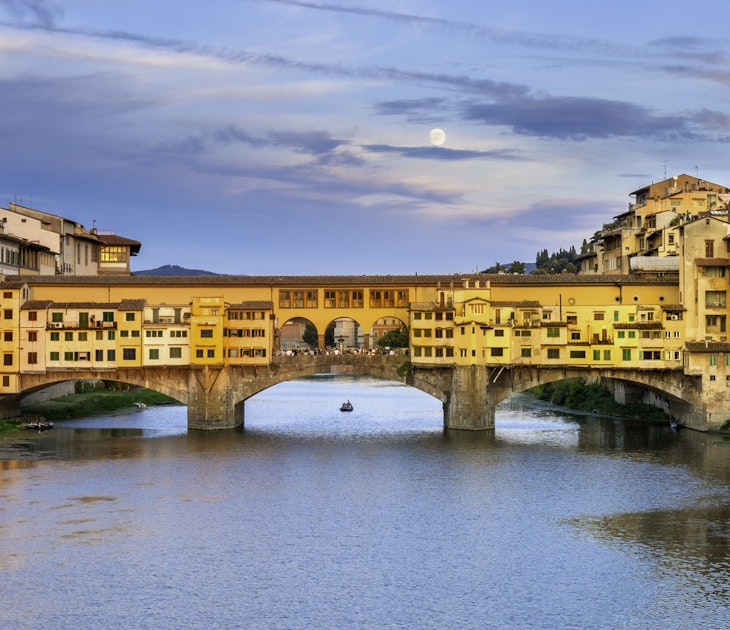
Budget Travel
Apr 21, 2024 • 7 min read
These budget travel tips can help your euros go further in Florence.

Apr 5, 2024 • 5 min read

Mar 26, 2024 • 6 min read

Mar 21, 2024 • 6 min read
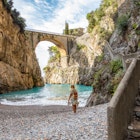
Mar 18, 2024 • 7 min read

Mar 15, 2024 • 10 min read
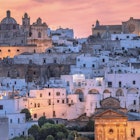
Mar 13, 2024 • 7 min read

Mar 8, 2024 • 17 min read
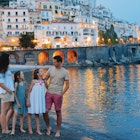
Mar 8, 2024 • 6 min read
You are using an outdated browser. Please upgrade your browser to improve your experience.
Fall in love with Tuscany!
Discover Tuscany Newsletter
Ask the Tuscany Experts on our Forum
- Book your Hotel
- Rentals by Owners
- Museums & Tours
Get the lowest rate for your Hotel in Tuscany through Booking.com
Get the best deal direct from the owners on TuscanyAccommodation.com
Book your unique Tuscan Experience
Book your Tour
Book your Tickets ahead & Skip the line!
Buy Museum Tickets
- Itineraries
- 7 days in Tuscany
Tuscany in 7 Days
Take a full week to explore.
Tuscany is one of the most beautiful regions in Italy, with medieval villages sitting atop hilltops, rolling hills covered in vineyards producing some of the best wines in the world and farmhouses and villas at the end of cypress-lined lanes. There are many things to see and do in the region, the hard part is really deciding how to fit everything into the days you have at your disposal!
Seven days is right about the perfect amount of time we recommend you dedicate to exploring this beautiful region and a car will be required . As we suggested in our 5 day itinerary for Tuscany , take Florence out of the equation and dedicate one day walking Florence or even two full days . Better yet have a look at our three day itinerary for exploring this exciting city.
Some parts of Tuscany can be reached with public transportation but many of the small villages waiting for you to be explored are not. Ready? Go!
DAY 1: Pisa and Lucca

You do not need a car while in Florence, as everything is walking distance. On your third day, pick up your car rental and head to Pisa in the morning to explore the famous Piazza dei Miracoli , where you'll be able to finally admire the famous Leaning Tower up close. Take time to visit the inside of the Duomo , the baptistery and Camposanto. Here's an idea of what else you can see in Pisa in a day , if you want to spend a little more time exploring this "college" town.
Limited time? Take a tour !
After a nice lunch, head to Lucca for the afternoon. Lucca is a small Venice without water, enclosed within huge Renaissance walls which today have become a park: rent a bicycle to explore and view Lucca from every angle from the added height of the walls. Take a walk through the historical city center , and go see the Duomo , the peculiar oval-shaped Piazza dell'Anfiteatro and climb to the top of the Guinigi tower with its curious centuries old trees at the very top!
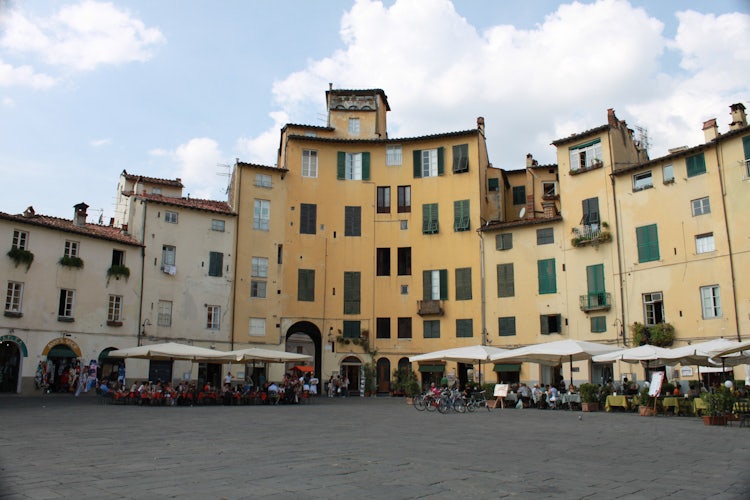
DAY 2: Chianti
The area between Florence and Siena is the beautiful Chianti region , famous for its excellent red wine worldwide. Vineyard-covered hills alternate with olive groves, each bend in the road offering a panoramic view of the wine region.
Starting from the north, take the Via Chiantigiana (SS222) and stop in Greve in Chianti to explore its peculiar shaped square and all of the shops in its perimeter. Visit the Wine Museum if you have some time, more for the chance to taste over 200 wine labels of the region than for the farm equipment. Continue along to Panzano in Chianti , stopping to walk along its ancient city streets and take pictures of the hamlet, then on to Castellina in Chianti to walk around the small center and through the city walls.
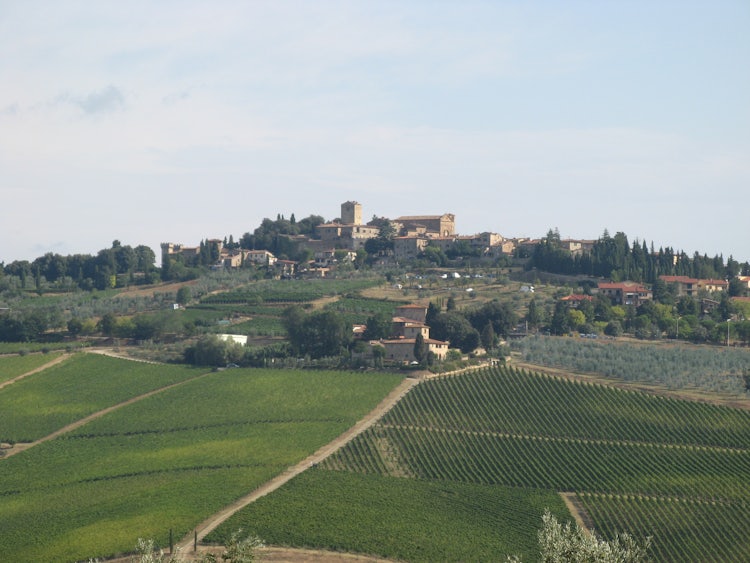
Wine tasting in this region is obligatory – the difficult part will be deciding where! There are wine shops in each town, but also signs along the road will signal wineries and their shops where you can taste that estate's wines. Stop at any that catches your fancy as this is Chianti Classico DOP region and you cannot go wrong.
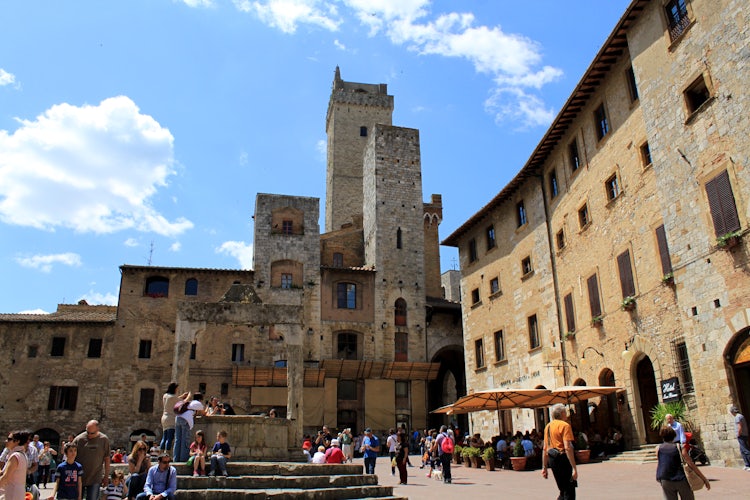
Day 3: San Gimignano
From Castellina, cut west toward Poggibonsi to reach San Gimignano , enjoying the drive and incredible views of the countryside on the way, stopping to enjoy the view of San Gimignano's medieval towers before you reach it. Enjoy the rest of the day here, as the majority of visitors leave this beautiful hilltop village as soon as the sun goes down giving you a chance to enjoy a quiet walk through its magical streets and stepping back in time. Make sure to taste the local specialty, the sandy colored Vernaccia of San Gimignano .
We have a more detailed details on the hilltop towns in Chianti if you want more ideas.

DAY 4 & 5: Siena and Monteriggioni
If you step back into the Renaissance as you visit Florence, then Siena takes you back into the Middle Ages. The city center sits on several hills so expect some climbing but it is quite small and the main sights are close: start in the Piazza del Campo , famous for its particular shell shape and for the Palio of Siena , a horse race between the various parts of town run twice every summer on July 2 and August 16. The Palazzo Comunale and Torre del Mangia tower over the Campo , offering an impressive view of the square and the city if you climb all the way to the top.
Head to the Duomo , standing majestically as a precious example of Italian Romanesque-Gothic style and admire the scenes across its pavement, a treasure waiting to be admired! Head back out to visit the Baptistery , crypt and Opera museum to see Duccio Buoninsegna's marvelous Maestà alterpiece from the 14 th century. View our itinerary for a day in Siena for more ideas.
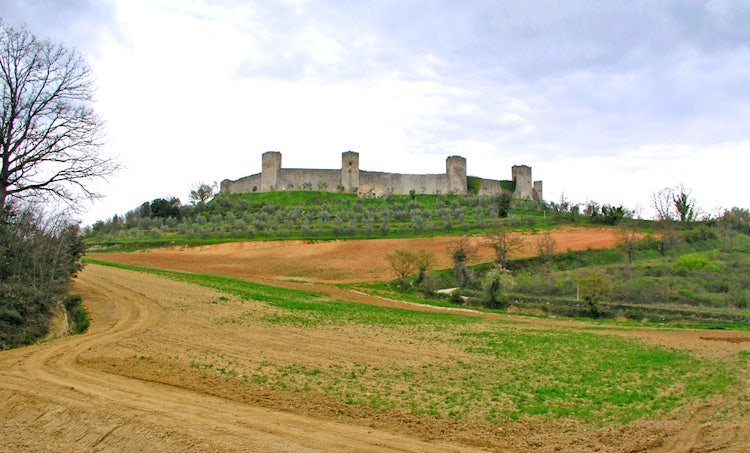
Just outside of Siena, the charming walled castle of Monteriggioni offers another trip into medieval times. The small castle still stands with 15 towers along the walls (although some of them were cut short through the centuries). You can visit the small castle, but don't forget to climb and walk along the massive walls from where you'll admire great views over the Tuscan countryside.
DAY 6: the Val D'Orcia
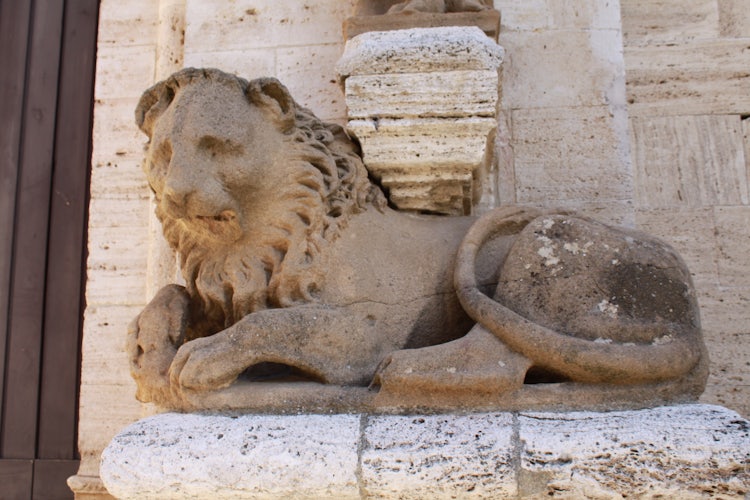
The Val D'Orcia is another region in Tuscany famous for its stunning landscapes and excellent red wines . Gentle hills, dotted with dark cypresses, red poppies and yellow sunflowers make this region the perfect postcard to send back to friends and families. It offers plenty to see, from the medieval streets of Montepulciano to the smaller picturesque towns of Pienza , San Quirico D'Orcia and Montalcino .
The area is known worldwide for its Brunello di Montalcino and Montepulciano DOC wines , making wine tastings an excellent past time at each stop.
DAY 7: Arezzo and Cortona

On your last day, head east toward the charming city of Arezzo , birth place of brilliant masters Piero della Francesca and Giorgio Vasari .
Visit the Basilica of Saint Francis with the stunning frescoes depicting the Legend of the True Cross by Piero della Francesca , the Church of San Domenico displaying the wooden Crucifix by Cimabue , the magnificent Piazza Grande with is loggias by Vasari and the Archaeological Museum Clinio Mecenate .
The small hilltop city of Cortona south of Arezzo is the perfect stop to end your trip through Tuscany. Cortona is featured in the book and film adaptation of " Under the Tuscan Sun ", coming to symbolize “ la bella vita ” in Tuscany. Its origins go way back to the Etruscans, with one of its main attractions being the Etruscan Academy Museum (MAEC- Museum of Etruscan Academy of Cortona ) displaying important Etruscan and Roman findings unearthed just outside of Cortona. The heart of the town is its Piazza della Repubblica , with the Palazzo Comunale standing tall over the square. The nearby Diocesan Museum displays a beautiful Annunciation of Cortona by the Beato Angelico , if there's time and energy to visit another museum!
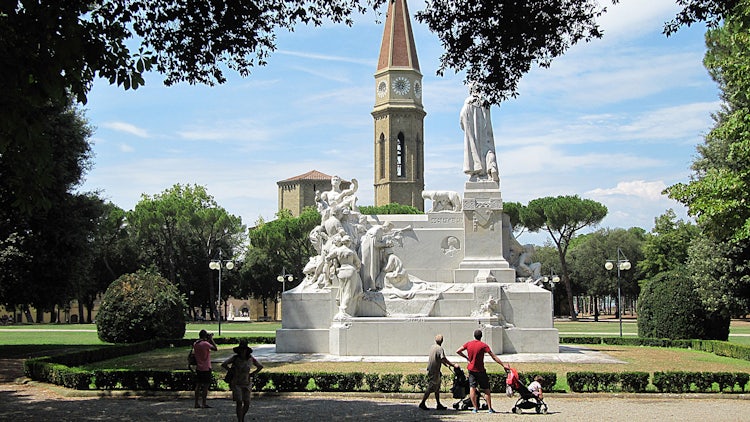
Planning your time in Tuscany? If you have any questions or need help in planning your itinerary, just post your questions on our FORUM and we'll be happy to help!
Related Sections
- Itineraries in Tuscany
- itineraries
You Might Also Like
Florence in 24 hours, a day in pisa, a day in siena, 2 days in florence, thermal itineraries in tuscany, 3 days in tuscany, top experiences in tuscany, photo gallery.
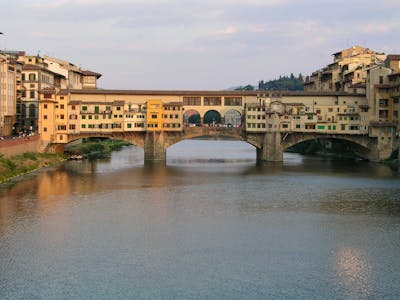
Author: Lourdes Flores
I'm from California but have called Florence my home for over a decade. I love to explore Italy; it is a lot of fun to try to see everything like I'm seeing it for the first time, keeping you, our readers, always in mind. I enjoy sharing what I know and helping others as they make their travel plans for Tuscany through our Forum . If you have itinerary-related questions, please post them there!
You'll love reading about...
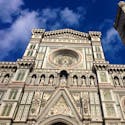
If you only have a day in Florence, make sure...
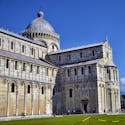
A short guide to the discovery of Pisa and its main artistic...
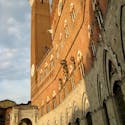
Are you planning a trip to Siena? Find out what must-see places you...

What to see in Florence in just 2 days? These are our suggestions...
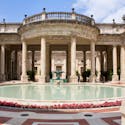
A trip around Tuscany to the discover of the...

Visiting Tuscany and have just 3 days? Here we suggest an itinerary...
Questions? The right place to ask is our Forum *
* Questions posted on Comments above will no longer receive replies: please ask on our Forum !
Our Travel Guides

IMAGES
VIDEO